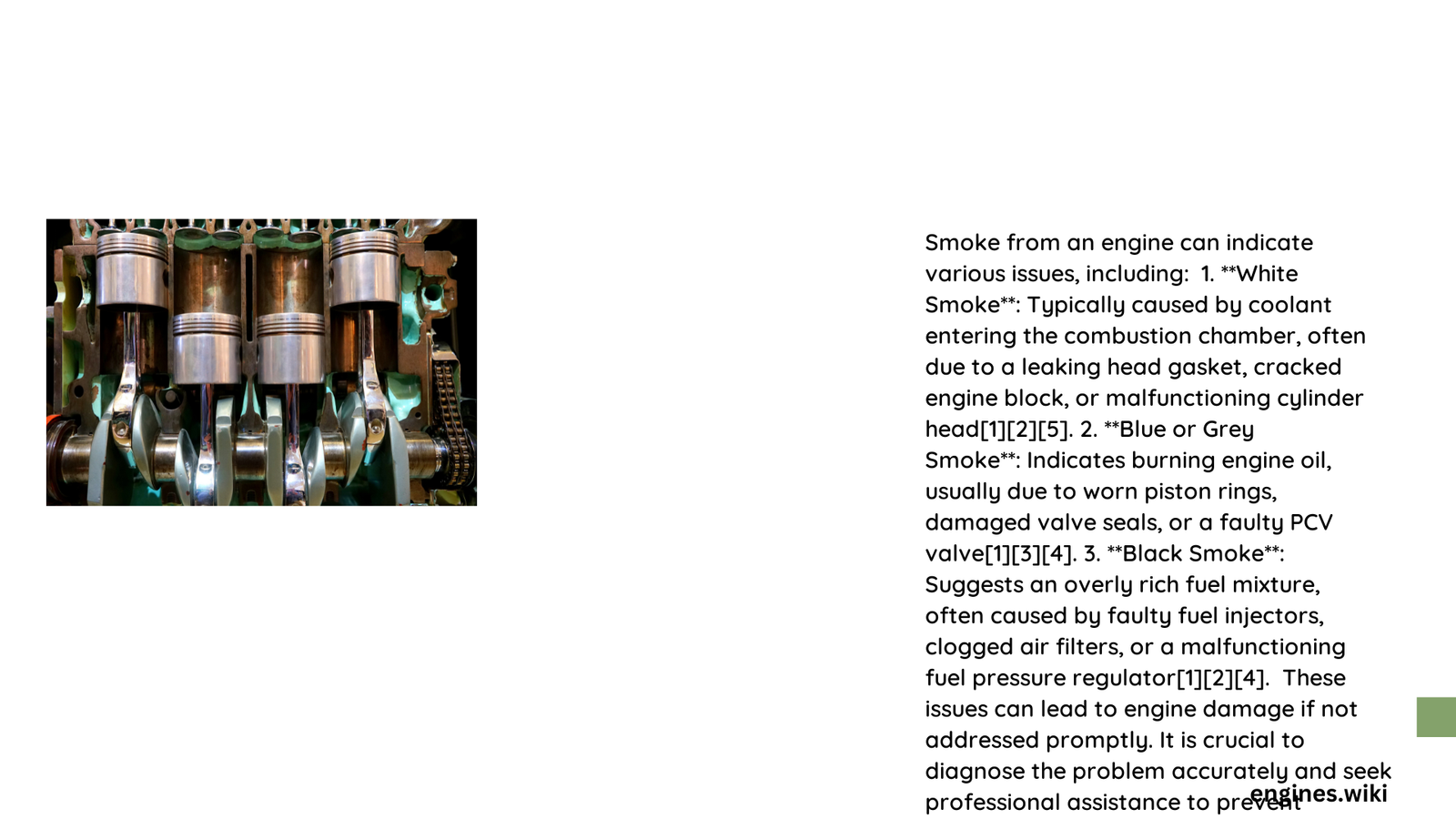Engine smoke can be a critical indicator of underlying mechanical issues that demand immediate attention. When your vehicle starts emitting unusual smoke from the exhaust, it signals potential problems ranging from minor condensation to severe internal engine damage. Understanding the color, consistency, and context of the smoke is crucial for accurate diagnosis and preventing costly repairs.
What Causes Different Smoke Colors?
Why Does Blue Smoke Appear?
Blue smoke indicates oil burning within the engine’s combustion chamber. This typically occurs due to several mechanical failures:
- Worn Piston Rings: Allow oil to seep into combustion areas
- Damaged Valve Seals: Permit oil leakage into engine cylinders
- Cylinder Wall Deterioration: Creates pathways for oil infiltration
Diagnostic Checklist for Blue Smoke
| Symptom | Potential Cause | Estimated Repair Cost |
|---|---|---|
| Consistent Blue Smoke | Severe Piston Ring Wear | $1,500 – $3,000 |
| Intermittent Blue Smoke | Valve Seal Degradation | $500 – $1,500 |
| High Oil Consumption | Multiple Mechanical Issues | $1,000 – $4,000 |
Why Does White Smoke Emerge?
White smoke can indicate two distinct scenarios:
- Thin White Smoke:
- Normal condensation during cold starts
- Typically disappears after engine warms up
-
Not a significant concern
-
Thick White Smoke:
- Potential coolant leakage
- Possible head gasket failure
- Indicates serious engine problems
Why Does Black Smoke Develop?
Black smoke represents an improper fuel-to-air mixture, often caused by:
- Clogged air filters
- Malfunctioning fuel injectors
- Oxygen sensor failures
- Electronic control unit (ECU) issues
Critical Diagnostic Techniques

How to Investigate Smoke Issues?
- Visual Smoke Color Examination
- Compression Pressure Testing
- Cooling System Pressure Check
- Advanced Diagnostic Scanning
Prevention and Maintenance Strategies
Key Recommendations
- Regular oil changes
- Consistent engine maintenance
- Prompt investigation of smoke signals
- Professional diagnostic assessments
Cost Considerations
Repair Cost Ranges:
– Minor Issues: $50 – $500
– Moderate Repairs: $500 – $1,500
– Major Engine Overhaul: $1,500 – $5,000
Expert Warning Signs
🚨 Immediate Action Required:
– Persistent smoke regardless of color
– Increasing smoke volume
– Accompanied performance degradation
– Unusual engine noises
Technical Insights
Most smoke-related issues stem from:
– Age-related mechanical wear
– Poor maintenance practices
– Manufacturing defects
– Environmental operating conditions
Professional Recommendation
Always consult a certified automotive technician for comprehensive diagnostics. DIY assessments can provide initial insights, but professional evaluation ensures accurate problem identification.
Conclusion
Understanding why smoke is coming from your engine requires systematic observation, technical knowledge, and proactive maintenance. Each smoke color tells a unique story about your vehicle’s internal health.
Reference:
– https://allaroundautorepair.com/understanding-car-smoke-colors-blue-white-and-black-smoke-and-what-they-mean/
– https://www.capitalremanexchange.com/causes-of-diesel-engine-smoke-by-color/
– https://nwfuel.ca/types-diesel-exhaust-smoke/
